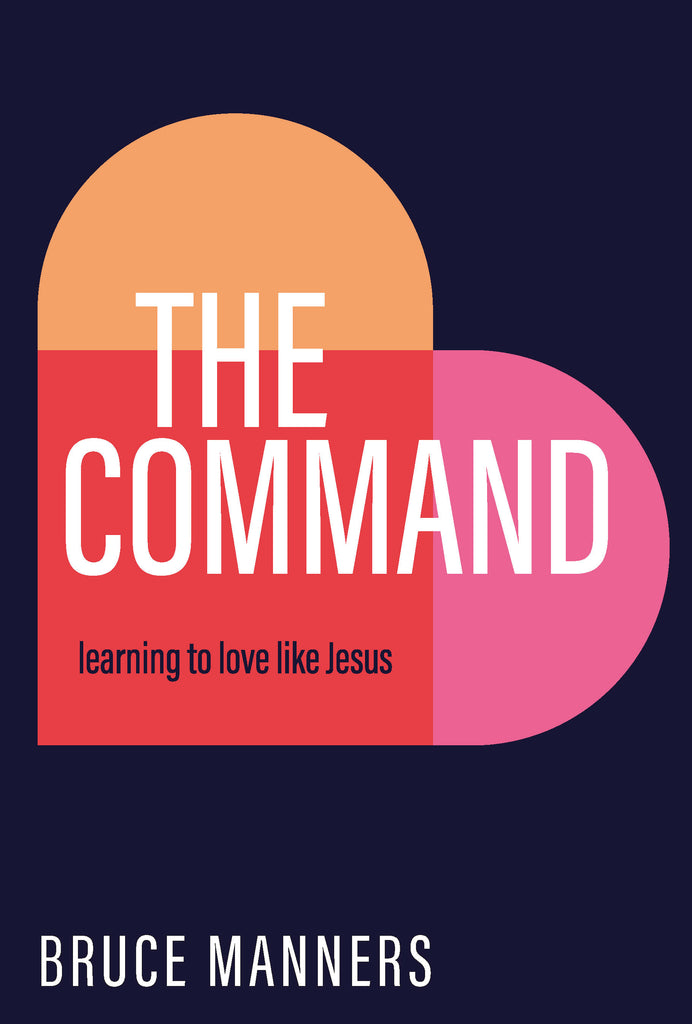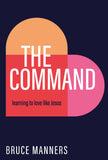The Command
Why is it that we remember the “thou shalt nots” of the 10 Commandments in the Old Testament better than the four “thou shalts” of Jesus in the New Testament?
The commands "Love the Lord your God with all your heart", "Love your neighbour as yourself", "Love one another", "Love your enemies"... the over-arching command is to love.
The Command imagines what kind of people we would be if we took Jesus’ commands seriously.
In His life and ministry, Jesus modelled what love looks like and that is where Bruce Manners picks up. Rich with stories that show the commands in practice and questions to challenge your thinking, this book is a call to learn to love like Jesus. After all, that’s what He told us to do.
Adventists have a vital interest in the Ten Commandments, particularly, the Sabbath command. However, we should also recognise the four commands Jesus gives in the gospels: To love God; our neighbour; our fellow disciples; and our enemies. We’re commanded to love. Like Jesus.
Love was the winning force that brought people to Jesus in the pre-Christian world and it can do the same in our post-Christian Western world. That’s our challenge. And it’s something every Adventist can do. No training is needed, just a heart for people and for God.
“Eminent theologian Karl Barth was once asked to summarise the message of the Bible in a couple of sentences. Barth replied thoughtfully, ‘Jesus loves me, this I know. For the Bible tells me so.’ In The Command, Bruce Manners has articulated some of the practical implications of this eternal reality. And he has done it in a way that may well both comfort and disturb you. Thank you, Bruce, sometimes we need a good shake!” —Dr Barry Oliver, former president, South Pacific Division
We’re commanded to love. The Command is about what that can look like.
- This book is written in an accessible style with a personal story beginning almost every chapter.
- Chapters end with a case study story illustrating the main emphasis of the chapter.
- Each chapter also features seven questions for group discussion.

| Book Title | The Command |
| Author | Bruce Manners |
| Type | Book |
| Format | Paperback |
| Publisher | Signs Publishing Company |
| Release date | 2022 |
Why is it that we remember the “thou shalt nots” of the 10 Commandments in the Old Testament better than the four “thou shalts” of Jesus in the New Testament?
The commands "Love the Lord your God with all your heart", "Love your neighbour as yourself", "Love one another", "Love your enemies"... the over-arching command is to love.
The Command imagines what kind of people we would be if we took Jesus’ commands seriously.
In His life and ministry, Jesus modelled what love looks like and that is where Bruce Manners picks up. Rich with stories that show the commands in practice and questions to challenge your thinking, this book is a call to learn to love like Jesus. After all, that’s what He told us to do.
Adventists have a vital interest in the Ten Commandments, particularly, the Sabbath command. However, we should also recognise the four commands Jesus gives in the gospels: To love God; our neighbour; our fellow disciples; and our enemies. We’re commanded to love. Like Jesus.
Love was the winning force that brought people to Jesus in the pre-Christian world and it can do the same in our post-Christian Western world. That’s our challenge. And it’s something every Adventist can do. No training is needed, just a heart for people and for God.
“Eminent theologian Karl Barth was once asked to summarise the message of the Bible in a couple of sentences. Barth replied thoughtfully, ‘Jesus loves me, this I know. For the Bible tells me so.’ In The Command, Bruce Manners has articulated some of the practical implications of this eternal reality. And he has done it in a way that may well both comfort and disturb you. Thank you, Bruce, sometimes we need a good shake!” —Dr Barry Oliver, former president, South Pacific Division
We’re commanded to love. The Command is about what that can look like.
- This book is written in an accessible style with a personal story beginning almost every chapter.
- Chapters end with a case study story illustrating the main emphasis of the chapter.
- Each chapter also features seven questions for group discussion.


